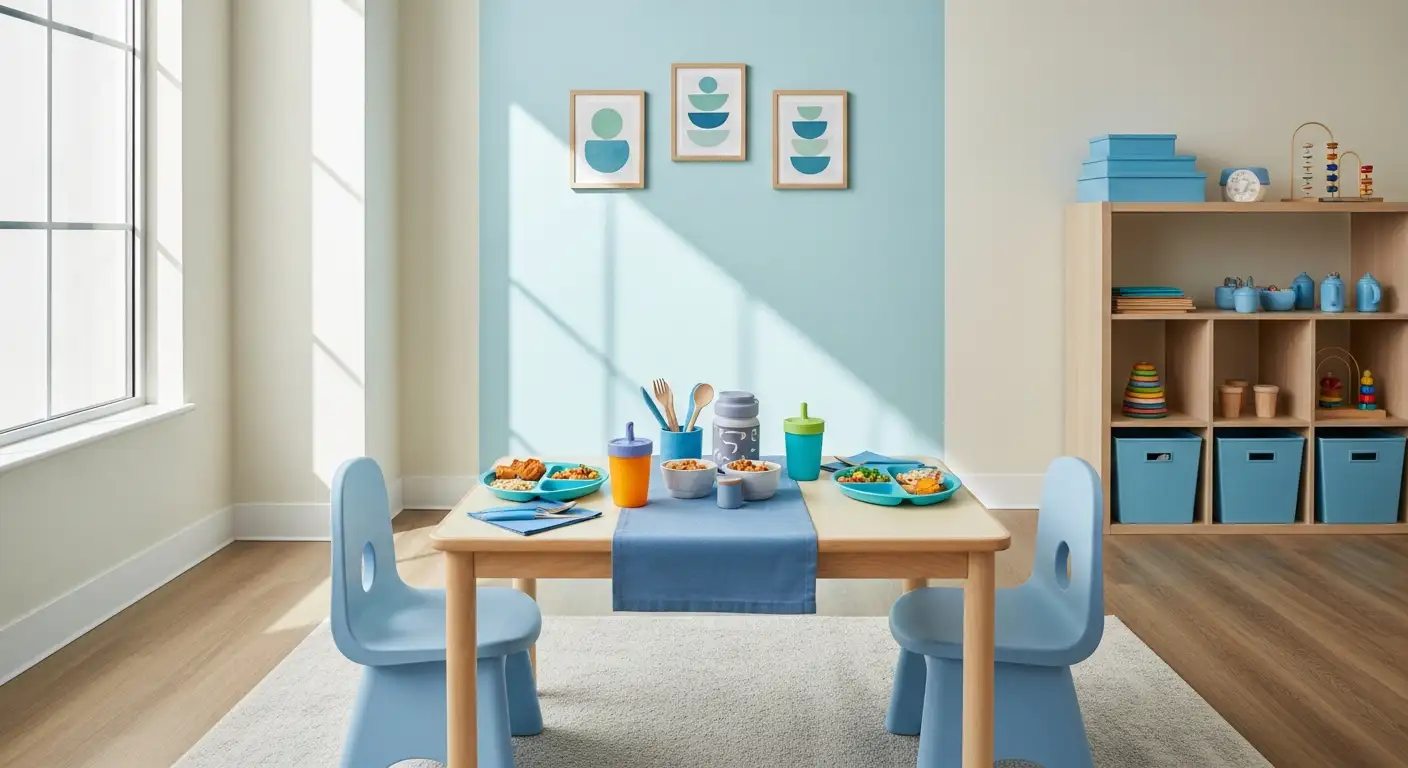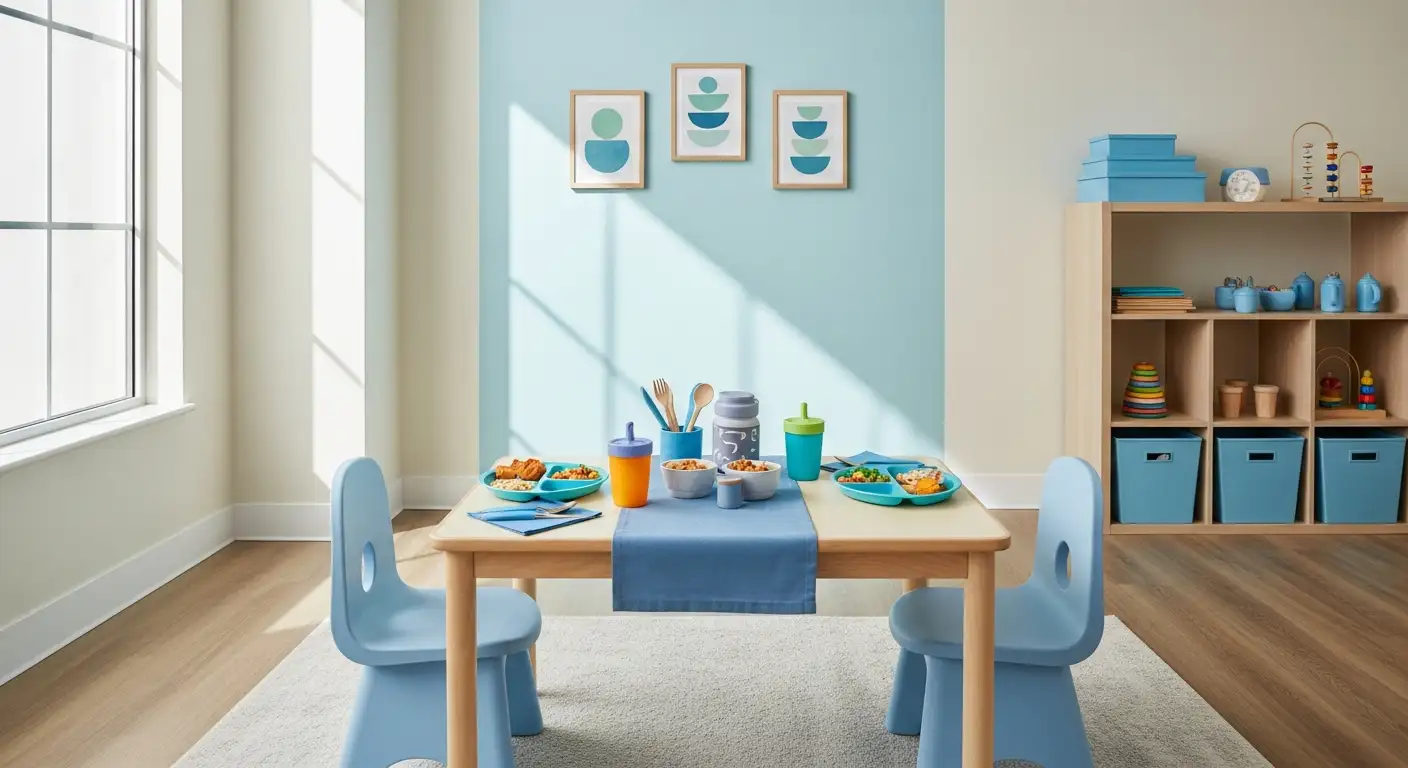Understanding ABA Therapy and Its Role in Autism Support
Applied Behavior Analysis (ABA) therapy stands at the forefront of intervention strategies for children with autism spectrum disorder (ASD). Grounded in the principles of behaviorism and operant conditioning, ABA therapy aims to cultivate essential life skills by reinforcing positive behaviors and minimizing challenges. Among these vital skills, personal hygiene routines represent a critical area where ABA principles can significantly enhance independence and quality of life. This article explores how ABA therapy systematically teaches hygiene habits to children with autism, ensuring that these routines are manageable, consistent, and respectful of individual needs.
What Is ABA Therapy and Who Provides It?
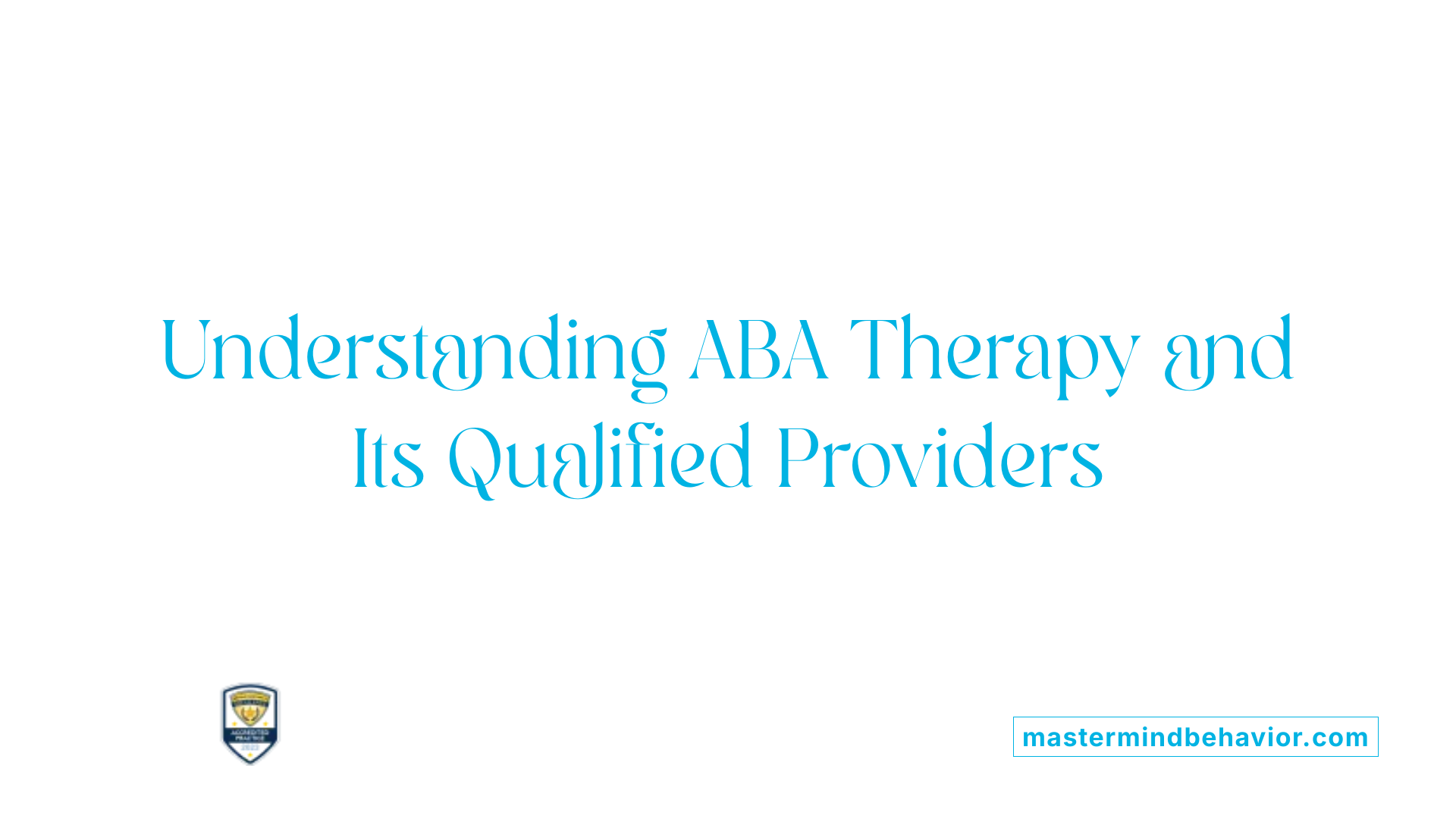
What is therapy focusing on autism and behavioral analysis?
Applied Behavior Analysis (ABA) therapy is a scientifically supported intervention designed to help individuals with autism learn and develop positive behaviors. The primary goal of ABA is to enhance essential skills such as communication, social interaction, and self-care, including personal hygiene routines. This is achieved by reinforcing desired behaviors using techniques like positive reinforcement, task analysis, and visual supports.
ABA therapy breaks complex behaviors into small, manageable steps, allowing children to learn at their own pace. Structured routines and visual aids, such as picture schedules and checklists, provide clear expectations and reduce confusion. These methods help children with autism become more independent by teaching skills methodically and respectfully accommodating their sensory needs.
Who provides therapy centered on autism and behavioral analysis?
ABA therapy is delivered by trained and certified professionals, including Board Certified Behavior Analysts (BCBAs), behavioral therapists, and other healthcare providers specializing in autism treatment. These specialists conduct assessments, design individualized treatment plans, and use data-driven strategies to adjust interventions as the child progresses.
Therapists often work across various settings such as homes, schools, and clinics, closely involving families and caregivers. Parental training is an important component, empowering caregivers to reinforce learned behaviors consistently. Collaborations with occupational and speech therapists may further address sensory sensitivities and communication challenges, supporting the child’s overall development.
Combining professional expertise with structured, positive reinforcement and sensory-aware techniques creates a supportive environment. This approach ensures that children with autism can successfully learn and maintain essential life skills, including personal hygiene, across different contexts.
Breaking Down Hygiene Skills Through Task Analysis

What Is Task Analysis in ABA Therapy?
Task analysis is a method used in ABA therapy that involves breaking down complex hygiene routines into smaller, manageable steps. This approach allows children with autism to learn each part of a personal hygiene task individually, making the entire routine less overwhelming and easier to master.
Step-by-Step Teaching Methods
By dividing hygiene tasks, such as brushing teeth or showering, into sequential steps, therapists and caregivers can teach each action clearly and systematically. For example, a shower routine might be broken down into steps like adjusting water temperature, turning on the water, getting wet, applying soap, rinsing off, and drying. Teaching these steps one by one helps build understanding and confidence.
Hands-On Strategies: Modeling and Role Play
ABA therapy uses hands-on methods such as demonstration and modeling to show children exactly how to perform each step in a hygiene routine. Role-playing can also be effective, allowing children to practice and rehearse the steps in a supportive setting. These interactive techniques reinforce learning and help children generalize skills to everyday situations.
By combining task analysis with hands-on teaching methods, ABA therapy creates structured, clear pathways for children with autism to develop essential hygiene skills with confidence and independence.
The Power of Positive Reinforcement and Motivation
Types of Positive Reinforcement
Positive reinforcement in ABA therapy involves using various rewards to encourage desired behaviors. Common types include verbal praise, stickers, and treats. Verbal praise is often used immediately after the child completes a hygiene task, providing instant feedback and encouragement. Stickers serve as tangible symbols of achievement that children can collect, making progress visible and rewarding. Treats, such as a favorite snack or toy, act as motivating incentives that can be reserved for consistent effort or mastery of hygiene skills.
How Rewards Encourage Hygiene Routine Participation
Rewards play a crucial role in motivating children with autism to engage in hygiene routines. By associating hygiene tasks with positive outcomes, children learn to anticipate pleasurable experiences, which increases their willingness to participate. This approach not only helps in building independence but also reinforces the continuation of these important habits over time. When children receive consistent rewards, they develop a stronger connection between completing the steps of a hygiene routine and receiving positive feedback, fostering better cooperation and enthusiasm.
Verbal Praise, Stickers, Treats as Motivators
Verbal praise is a simple yet powerful motivator, delivering immediate recognition for efforts made during hygiene tasks. Stickers provide a visual and collectible token of success, which can be especially effective for young children. Treats, when used appropriately, serve as highly desirable rewards that encourage repeated participation. Together, these positive reinforcements create a supportive environment that values and encourages the child’s progress, making the learning process enjoyable and effective.
Utilizing Structured Routines and Visual Supports
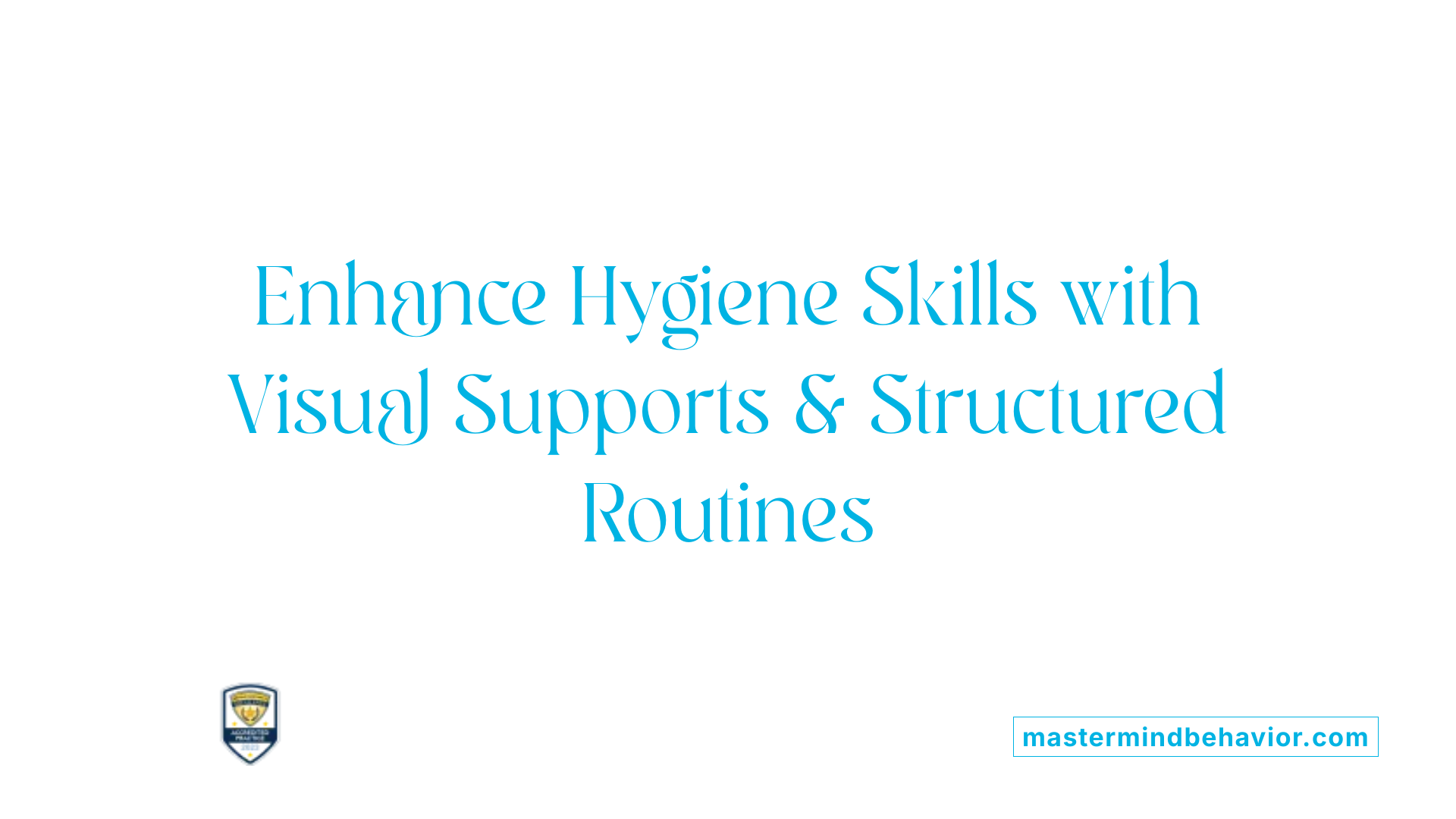
Why Are Visual Supports Important in Teaching Hygiene Routines?
Visual supports serve as essential tools for helping children with autism understand and follow personal hygiene routines. These aids include picture schedules, checklists, and social stories that break down tasks into clear, manageable steps. They visually guide the child through each stage of the routine, reducing confusion and promoting independence.
What Visual Aids Can Be Used?
- Picture Schedules: These display each step of a hygiene task sequentially, such as brushing teeth or showering, helping the child anticipate what comes next.
- Checklists: Simple tick-off lists encourage active participation and provide a sense of accomplishment as steps are completed.
- Social Stories: Narratives that explain hygiene behaviors in a relatable way, often illustrating the benefits and expectations.
How Can Consistent Routines Be Created?
Creating a consistent hygiene routine involves structuring daily activities in a predictable manner. This can be reinforced by using the same visual aids each time and maintaining the order of steps. Consistency helps the child feel secure and familiar with the process, enhancing mastery of skills.
How Do Visual Supports Reduce Confusion?
Visual supports provide clear expectations that minimize uncertainty. When words alone might be difficult to process, images and symbols convey the routine effectively. They serve as constant reminders and reduce dependency on verbal prompts.
In summary, the use of structured routines combined with visual supports forms a practical foundation in teaching personal hygiene skills to children with autism. This approach helps to clarify expectations, support independence, and build confidence in daily self-care activities.
Incorporating Sensory Considerations and Individualized Approaches
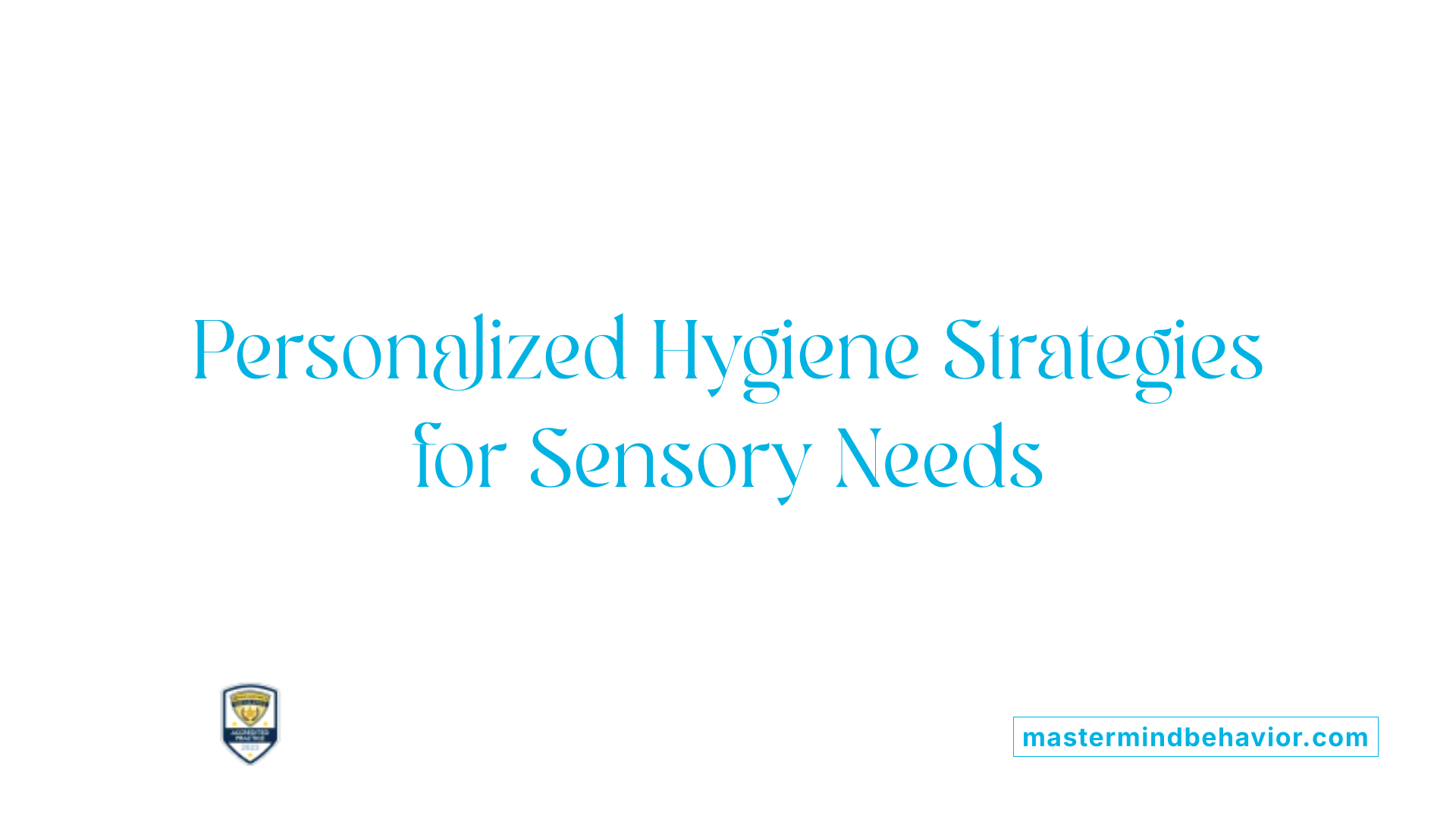
How Do Sensory Sensitivities in Autism Affect Hygiene?
Many children with autism experience sensory sensitivities that can make personal hygiene tasks challenging. For example, they might be hypersensitive to certain textures, smells, or water temperatures, which can cause discomfort or distress during activities like showering or teeth brushing. Conversely, some children might be hyposensitive, requiring stronger sensory input to engage effectively with hygiene routines. Understanding these sensory profiles is essential for tailoring hygiene teaching methods.
What Adjustments Can Be Made for Textures, Water Temperature, and Lighting?
ABA therapy emphasizes making sensory-friendly adjustments to create a more comfortable hygiene environment. Some strategies include:
- Textures: Choosing soft towels, gentle soaps, and preferred toothbrushes to accommodate tactile sensitivities.
- Water Temperature: Allowing children to control water temperature to avoid discomfort from overly hot or cold water.
- Lighting: Using soft lighting or natural light to minimize visual overstimulation during hygiene routines.
These modifications help reduce sensory overload, making hygiene tasks more approachable and enjoyable.
Why Is Respecting Individual Sensory Needs Important?
An individualized, sensory-aware approach respects each child's unique preferences and sensitivities. ABA therapy focuses on flexibility and adapting strategies to fit the child's needs rather than applying a one-size-fits-all method. This respect fosters trust, reduces anxiety, and encourages participation in hygiene routines, ultimately promoting independence and success.
By incorporating sensory accommodations like task breakdowns, visual guides, and positive reinforcement tailored to individual sensory profiles, ABA therapy effectively supports children with autism in mastering personal hygiene skills.
Tracking Progress and Generalizing Skills Across Contexts

How is data collection and progress monitoring used in ABA therapy?
ABA therapy relies heavily on systematic data collection to monitor the child's progress in learning personal hygiene skills. Therapists regularly track behaviors, noting improvements or challenges to understand how the child responds to specific interventions. This empirical approach enables tailored adjustments, ensuring that teaching methods align with the child's evolving needs.
How do therapists adjust strategies based on individual development?
Using the data gathered, therapists modify teaching strategies to better suit each child's unique sensory preferences and learning pace. This might involve changing the type of reinforcement, altering the task sequence, or incorporating additional visual supports. Flexibility in approach respects the child's individual differences and promotes effective learning.
What does generalizing hygiene skills to various settings entail?
Generalization means helping the child apply hygiene routines across different environments such as home, school, and community settings. ABA therapy emphasizes consistency by using similar visual schedules, routines, and reinforcement systems in these various contexts. This continuity fosters independence and reduces confusion when transitioning between settings.
Why is parental training and therapist collaboration important?
Parents play a crucial role in reinforcing hygiene skills outside of therapy sessions. Training parents in ABA techniques empowers them to maintain consistent routines and reinforcement at home. Collaboration between occupational therapists, behavioral therapists, speech therapists, and parents ensures that hygiene skills are supported comprehensively, addressing sensory sensitivities and communication needs effectively.
By closely monitoring progress, adjusting methods responsively, and promoting skill use in multiple settings, ABA therapy provides a robust framework for developing lasting personal hygiene habits in children with autism.
Building Lifelong Independence in Personal Hygiene with ABA Therapy
ABA therapy offers a transformative approach to teaching personal hygiene routines to children with autism. By breaking down tasks into manageable steps, leveraging positive reinforcement, and employing visual supports, therapists can create clear, structured, and supportive learning environments. Incorporating sensory accommodations and respecting individual needs further tailor the process, making hygiene routines accessible and less overwhelming. Continuous tracking of progress ensures that teaching strategies remain effective and that skills generalize across various settings, including home and school. Collaboration among therapists, families, and caregivers is essential in nurturing independence and confidence in self-care. Ultimately, ABA therapy not only equips children with crucial hygiene habits but also empowers them towards greater autonomy and improved quality of life.
References
- Teaching Personal Hygiene Skills for Children With Autism
- A Guide to Teaching Kids With Autism Hygiene Skills
- Personal Hygiene Tips for Teaching Autistic Children
- Teaching Hygiene With a Shower Sequence for Autism at ...
- Who Qualifies for ABA Therapy: Eligibility Guide
- Applied Behavior Analysis (ABA)
- Qualifications Needed to Receive ABA Therapy
- ABA and other therapies
- Treatment and Intervention for Autism Spectrum Disorder
- Applied Behavior Analysis (ABA)




